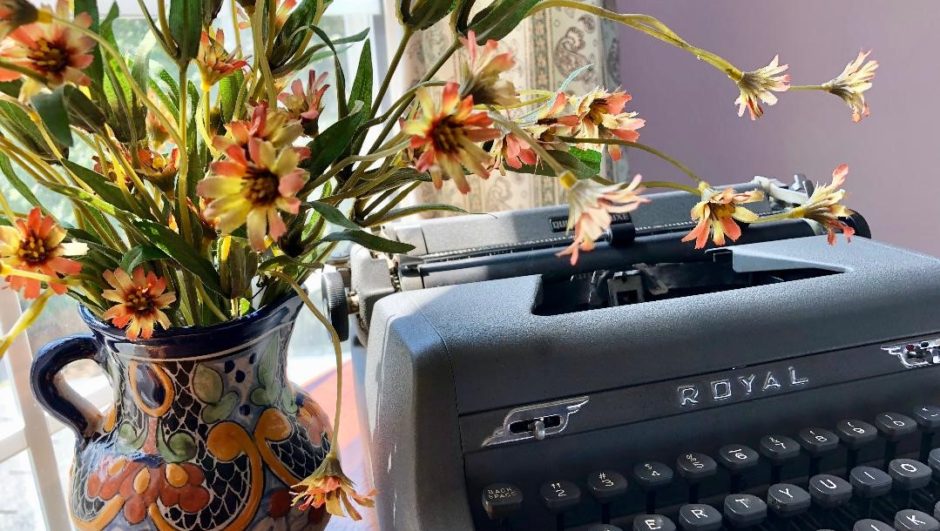by Linda Harris Sittig

The Navajo Nation land stretches 27,500 square miles across Arizona, Utah, and New Mexico. It is the largest native reservation and is comparable in landmass to West Virginia.
The landscape and the people of the arid desert and high plateaus appear to be timeless. However, many lifestyle changes occurred in the late twentieth century. And it was Annie Dodge Wauneka who precipitated most of the medical advancements.
Her Early Life
Born 1910 into the Tse níjikíní (Cliff Dwelling People) in the Clan of the Diné (Navajo), Annie began life in a traditional Navajo hogan near present-day Sawmill, Arizona. Within a year, her father, Henry Chee Dodge, decided he would raise her. For the next seven years, Annie learned Navajo history and culture from her father as he taught her to speak both Navajo and English.
At age eight, she attended a government-run boarding school in Fort Defiance, Arizona. During her first year, 1918, the Spanish Influenza pandemic struck the school. Faculty and children alike succumbed.
In 1918, an estimated native population of 320,000 lived in the United States, down from the original 10 million. After the flu pandemic, the CDC estimates that 50 million people worldwide died from the virus. This includes an estimated 12.5% of all Native Americans.
Fortunately for Annie, she only contracted a mild case and quickly recovered. The school nurse called upon Annie to help her care for the remaining flu victims.
That experience was the catalyst for Annie’s life-long commitment to public health.
Her next education was at a government-sponsored Indian school In Albuquerque, New Mexico. She met George Wauneka, another student, and they married in 1929 when Annie turned nineteen.
As a Young Adult
During the 1930s and 1940s, Annie stayed busy attending tribal council meetings with her father and raising six children with her husband George. As she traveled with her father across the vast Navajo reservation, she began to see a pattern in many of her people’s health woes.
At the time, few people understood the importance of sanitation. Annie began to think that ‘white man’s medicine’ could help her people. However, she also understood both the Navajo’s suspicious nature and distrust of the white culture.
Annie finally decided that to help her people, she had to fight from a position with power. So she ran for and won a spot on the Navajo Tribal Council. The year was 1952, Annie was only the second woman ever to hold a council member position.
She went right to work, speaking out for the need for more reservation doctors and hospitals. Then she advocated the need to educate the Navajo about tuberculosis. Although the Navajo mostly followed traditional healing practices, Annie voiced that tuberculosis and pneumonia were higher on the reservation than the national average. If her people could get hospitals right on the reservation and be cared for by skilled doctors, they might lower the killing disease’s abysmal rate.
Because there was no word for ‘germ’ or ‘vaccination’ in the Navajo language, Annie devised an English-Navajo medical dictionary. This tool helped her people understand how the sicknesses spread.
In 1953, the Navajo Tribal Council appointed Annie Dodge Wauneka as the chair of the newly created Health and Welfare section of the Community Services Committee.
To Annie, this was the green light to march forward with her plans.
Educating Herself First
She started taking classes to learn more about the diseases affecting her people. Within a few years, she enrolled at the University of Tucson, Arizona, and worked to achieve a degree in public health. She continued to travel the reservation, teaching mothers better health practices. And always, she was respectful of their traditional beliefs.
In 1956 Annie was appointed to the U.S. Advisory Committee on Indian Health.
She had already tackled tuberculosis; now, she focused on women’s health. Annie campaigned for better gynecological, obstetric, and pediatric care. Because many babies were born in poorly heated and unclean homes, the infant mortality rate was high. Annie conceived a plan. If a native woman agreed to give birth in a reservation hospital, the Tribal Council would give her free clothing and blankets in exchange.
By the end of the 1960s, the mortality rate had decreased by twenty-five percent.
Did she slow down? Not at all. In 1961 she hosted a daily radio show in Gallup, New Mexico. Broadcast in the Navajo language, Annie covered items on significant health issues.
In 1963 President Lyndon B. Johnson awarded Annie Dodge Wauneka the Presidential Medal of Freedom. It was given for her dedication to helping the Navajo access modern medicine without sacrificing their traditions. She was the first Native American to win this honor.
Annie continued working to support the Navajo Nations’ improvement of health standards well into the late 1980s. She died at 87.
As I have said before, Strong Women come from all races.
Thanks to blog follower Randy Harris of California, who found Annie’s story and shared it with me. Photo credit to PDPhotos of Pixabay.
You can also catch me on Twitter and Instagram @LHsittig, and my webpage www.LindaSittig.com. My three novels: Cut from Strong Cloth, Last Curtain Call, and Counting Crows, are available in bookstores and online.
Peace and health to everyone.
~ Linda

What a wonderful story of intelligence and determination. I love how Annie used her innate respect for her people’s culture and traditions to enrich the new ideas and methods she introduced to improve their health and future. Do hope you had a lovely Thankful Day, Linda. This is my new name for “Turkey & Stuffing” day. I have always had so much respect for and interest in the Native American way of life and want to de-couple this Holiday from the myth of Grateful Pilgrims and Happy willing Native Americans! For some of the tribes it has, not surprisingly become known as a “National Day of Mourning”.